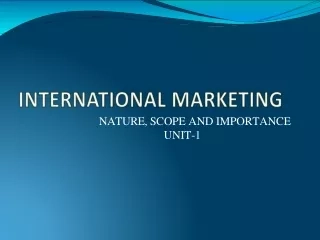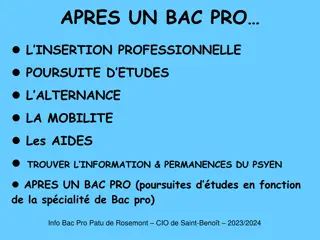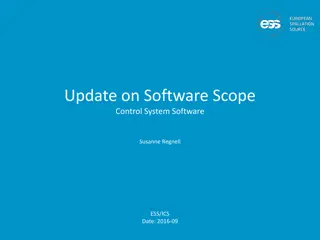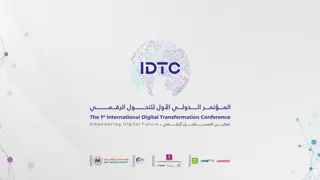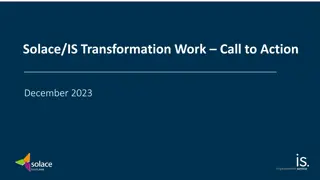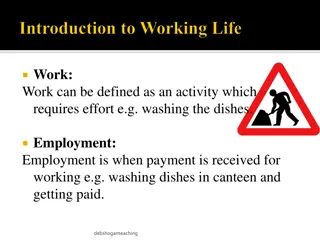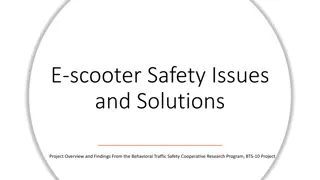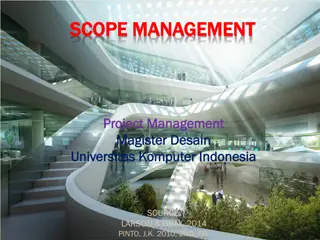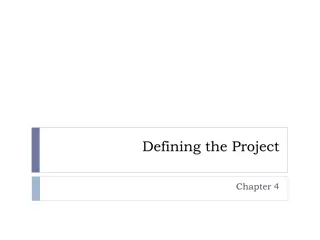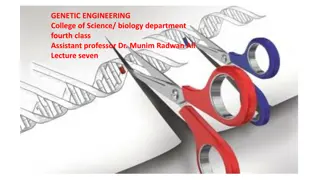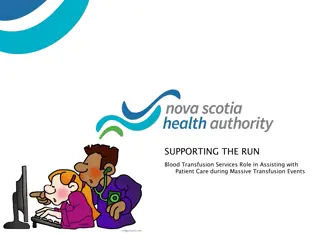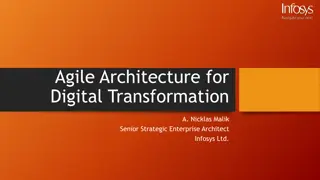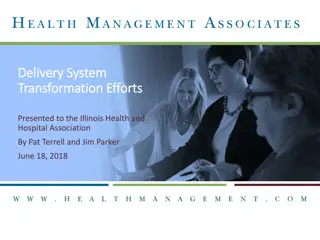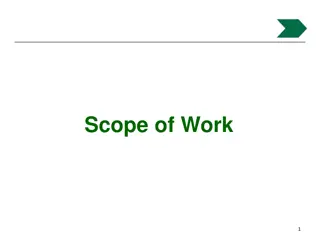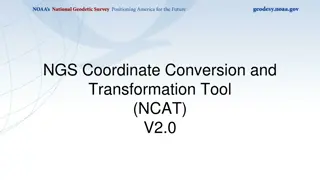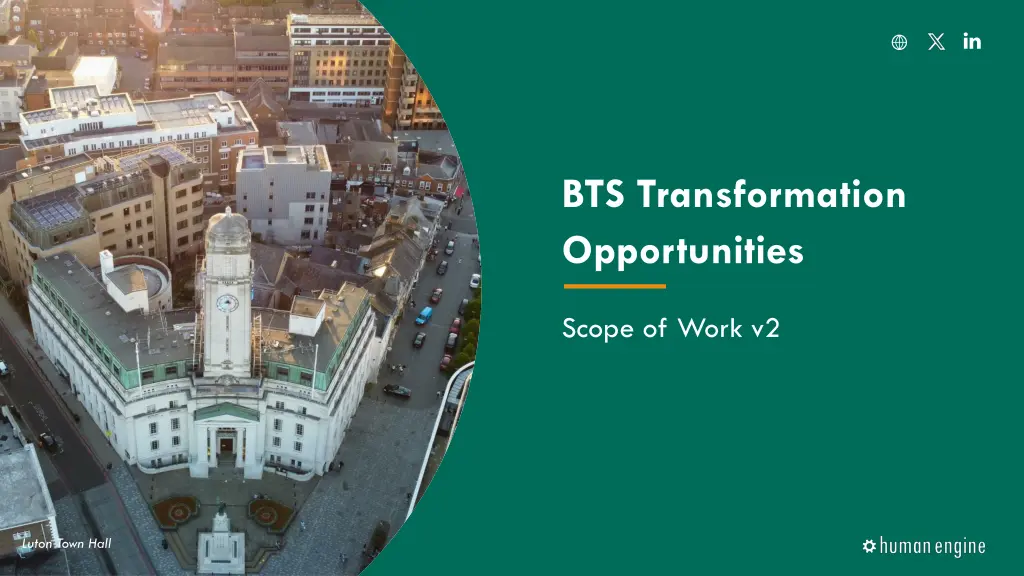
Building and Technical Services Transformation Project Overview
"Explore how Building and Technical Services (BTS) seeks to transform its operations to achieve a balance between commercial viability and public sector ethos. Discover the phases and objectives of this in-house delivery organization in Luton Town Hall."
Download Presentation

Please find below an Image/Link to download the presentation.
The content on the website is provided AS IS for your information and personal use only. It may not be sold, licensed, or shared on other websites without obtaining consent from the author. If you encounter any issues during the download, it is possible that the publisher has removed the file from their server.
You are allowed to download the files provided on this website for personal or commercial use, subject to the condition that they are used lawfully. All files are the property of their respective owners.
The content on the website is provided AS IS for your information and personal use only. It may not be sold, licensed, or shared on other websites without obtaining consent from the author.
E N D
Presentation Transcript
A white x on a black background World with solid fill Description automatically generated BTS Transformation Opportunities Scope of Work v2 Luton Town Hall
Background and Requirement Building and Technical Services (BTS) is the council s in-house delivery organisation for repairs and maintenance. BTS provides planned and reactive repairs and maintenance for the council s housing estate. It should also have first refusal on any works required by Corporate Property under 75k, but this does not always happen in practice. It operates as a quasi-commercial delivery arm, being a wholly owned department of the council but operating its own website and shadow P&L account. BTS is often caught between two stools on one hand being expected to operate in a commercial manner, on the other still being subject to public sector rules and procedures. The council s ideal outcome is to achieve the optimum balance of both - transforming the service to be more profitable and operate with greater commercial acumen, while maintaining a strong public sector ethos for quality, compassion and good governance. Options such as outsourcing or entering into a joint venture with a private contractor have been ruled out. The project sponsors do not think these options will be politically acceptable to the council and they have therefore been excluded from the scope of the review. Reviews of BTS have been undertaken in the past but these have not produced a conclusive set of recommendations and actions. The sponsors wish to commission a review that will provide clear, actionable recommendations to take forward.
Project Approach Phases 1 and 2 to be delivered under the initial commission, in order to review findings from phase 2 and agree next steps Define Vision and Objectives Identify Key Challenges and Opportunities Implementation Assess Options Develop Business Case Phase 2 will undertake a review of the as-is service covering the elements listed on pages 5 and 6. Phase 3 will be an options appraisal, assessing different delivery models against the objectives agreed in phase 1. Phase 4 will work up the agreed option into a business case for change, supported by a business plan, Target Operating Model and implementation plan. Phase 5 will be the project management and implementation of the agreed changes, as determined by the business case. Phase 1 will define the vision and objectives for the service in order to agree the level of commercial ambition and set the criteria against which to assess current performance and future options. The output of this phase will be a report detailing the challenges and opportunities. The output of this phase will be an options appraisal with recommended option. The output of this phase will be an options appraisal recommended option. with
Define Vision and Objectives 1. Conduct a series of 1:1 interviews and group workshops with stakeholders, including a select reference group of Members 2. Assess the role of BTS in delivering in Luton 2040 ambition 3. Facilitate the co-production of a vision statement and underpinning set of objectives for BTS to be used to assess options in stage 3 The end product of this stage will be avision statement and objectives to be approved by Corporate Director / Transformation Board / Members?
Identify Key Challenges and Opportunities (1) 1. SWOT Analysis identifying strengths, weaknesses, opportunities and threats for the service 2. Subject to objectives agreed in stage 1, this would include an assessment of the market and any opportunities for BTS to diversify and grow. The scale and relative importance of this will be determined by the vision and purpose for the service, including howcommercial it should be. 3. Review the existing business model and/or business plan for the service, assessing whether it is fit-for-purpose to (i) achieve the objectives agreed in stage 1, (ii) address the findings of the SWOT analysis 4. Review how financial and non-financial performance is set, monitored and reported and make recommendations to align this to the objectives agreed in stage 1 5. Review the current portfolio of services and whether there are opportunities to optimise this 6. Review the existing approach and methodology for the costing and pricing of goods and services 7. Review the levels of overheads and how this compares with market norms and best practice 8. Review the SLA between Corporate Property and BTS; undertake an assessment of compliance with the SLA; understand the reasons for instances of non-compliance and how these can be addressed
Identify Key Challenges and Opportunities (2) 9. Review the approach to materials procurement and contract management (mainly reliant on Travis Perkins) and determine if other models could represent better value for money 10. Review the approach to services procurement and contract management (used when demand exceeds capacity) and determine if other models could represent better value for money 11. Make an assessment of the operational efficiency and effectiveness of the service in areas of work forecasting, scheduling and resourcing 12. Review the approach to workforce planning, particularly succession planning given the age profile of the workforce, and make recommendations 13. Review pay structures in the service and benchmark these against market comparators 14. Recommend approaches to address the large number of vacancies being carried by the service The end product of this stage will be areport covering the above to be considered by Corporate Director / Transformation Board / Members?
Assess Options 1. Develop options appraisal for the future of the service, to include Do Nothing, Optimise Existing Service and Establish Trading Company, alongside any other realistic options identified by the assessment of challenges and opportunities in stage 2. Outsourcing has been ruled out as an option. 2. Options will be assessed against the objectives for the service identified in stage 1 the option best suited to deliver the agreed objectives will be the preferred option. The preferred option will be further developed in stage 4. The end product of this stage will be an options appraisal. The preferred option will be recommended to Council Executive for decision. Depending on the recommendation this may be a Key Decision.
Develop Business Case 1. Develop a business case for the preferred option agreed at stage 3 2. This will include a business plan for the service, including the impact on the operating profit under the agreed option, to include best, central and worst case scenarios 3. Develop a Target Operating Model that will set out any changes to operating practices that would make BTS more efficient in its approach and provide better outcomes for residents, within the parameters of the agreed option for the future of the service 4. Implementation plan with: a. Internal and external resource requirements b. Implementation phases and milestones The end product of this stage will be a business case, supported by a business plan, Target Operating Model and implementation plan. This will be submitted to the Council Executive for decision.Thismay be a Key Decision.
Implementation 1. Maintain the Implementation Plan developed in stage 4 and update this as required during the life of the project 2. Develop Stakeholder Management and Communication Plans 3. Project management of the implementation phase: transition to the new operating model and reconfiguring the service to execute the new business plan
Project Team Wardown Park
Project Team TBC once scope finalised Project team to be confirmed once scope finalised and required skillset identified
Resources and Commercials Luton Airport
Resources TBC once scope finalised Resource Allocation (Days) Phase 1: Define Vision and Objectives Role 1 Role 2 Role 3 Role 4 Total 1.1 Stakeholder Interviews and write-ups x n 1.2 Workshops and write-ups x n 1.3 Mapping exercise against Luton 2040 Vision 1.4 Facilitate co-production of vision and objectives Total
Resources TBC once scope finalised Resource Allocation (Days) Phase 2: Identify Key Challenges and Opportunities Role 1 Role 2 Role 3 Role 4 Total 2.1 2.2 2.3 2.4 2.5 2.6 2.7 2.8 2.9 2.10 2.11 2.12 2.13 2.14 Total

